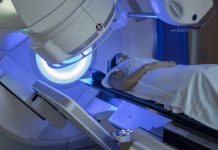Dr Hernando Lopez-Bertoni at the Department of Neurology, Johns Hopkins School of medicine, discusses the development of miRNAs in brain cancer therapy
Glioblastoma: An aggressive brain cancerdepare
Glioblastoma multiforme (GBM) is an aggressive and life-threatening form of brain cancer. Although brain cancers as a whole are relatively uncommon, GBM are the most common type of malignant brain tumour in adults. The most common symptoms that appear are relatively innocuous – recurring headaches, difficulty thinking and speaking, blurry vision and unusual changes in mood or personality – making early detection a challenge. Patients often display advanced disease at the time of diagnosis reducing the therapeutic window of opportunity.
Treatments including surgery, radiation and chemotherapy are available but the disease remains incurable and devastating1.
Cancer Stem Cells – The cells of origin for the tumour
If cancer is considered the emperor of all maladies, then it is fair to say that cancer stem cells (CSCs) are the seeds that spread this evil. Cells within highly aggressive tumours, such as GBM, display poorly differentiated characteristics including high expression of genes enriched in pluripotent embryonic stem cells (ESCs) posing molecular parallels between the stem cell pheno- type, induced pluripotency, and cancer. In GBM, transcriptome analysis of clinical samples identified distinct subtypes based on molecular signatures (i.e. mesenchymal, classical, and proneural) with the mesenchymal subtype, thought to be the most aggressive, sharing a high-degree of similarity with stem cells at the transcriptome and epigenetic level2.
Moreover, single-cell analysis shows GBM cells exist in at least four different cellular states and can transition dynamically between molecular subtypes depending on cell-intrinsic and extrinsic factors3. This high-degree of transcriptional and epigenetic adaptability is thought to influence the emergence of therapy-resistant GBM cell sub-populations and plays a pivotal role in establishing intra-tumour heterogeneity4.
Identifying novel and creative ways to eradicate the apical tumour-progenitor cell (i.e. CSC) and block these cellular transitions will more effectively treat deadly tumours, such as GBM, and prevent recurrence5.
Understanding cellular plasticity
In recent years we have come to the paradigm-shifting realisation that non- stem-like cancer cells can acquired stem-like traits in very dynamic fashion in response to multiple stimuli, including those designed to get rid of the tumour itself10. This ability to switch phenotypes, commonly referred to as plasticity, is a key feature that allows neoplastic cells to adapt and maintain tumour growth. Plasticity requires extensive transcriptional changes and is driven, in large part, by pluripotency factors (i.e. Oct4, Sox2, Klf4, and c-Myc). A key component of these transcriptional changes are epigenetic alterations including nucleosome re-positioning, re-distribution of DNA and histone modifications, and expression of non-coding RNAs.
Over the last decade our lab has been focused on understanding what drives the de-differentiation of GBM cells to their tumour-propagating state with the goal of identifying and exploiting tumour cell vulnerabilities6-10. We were at the forefront of identifying a role for pluripotency factors in controlling the tumour-propagating phenotype of GBM stem-like cells9.
Our work has uncovered a molecular circuit in which pluripotency factors Oct4 and Sox2 drive GBM stem cell transitions and tumour propagation, in part, by repressing non-coding RNAS (i.e. miRNAs) that regulate two distinct epigenetic mechanisms: (i) changes in chromatin architecture through the action of HMGA110, and (ii) DNMT-dependent DNA methylation events9.
Importantly, we show that normalisation of epigenetic networks by reconstituting these non-coding RNAs inhibits the tumour propagation capacity of GBM stem cells with curative effects in pre-clinical GBM xenograft models 8.
miRNAs as molecular therapeutics
Non-coding RNAs (ncRNAs), in particular microRNAs (miRNAs), are emerging as critical regulators of cell fate and oncogenesis. miRNAs are a class of endogenous double-stranded RNAs 19-22 nucleotides long that repress activity of complementary messenger RNAs (mRNAs) selectively by targeting mRNA for degradation usually via complementary 3’-UTR seed sequences.
Cutting-edge advances in nanocarrier technology now allows us to accommodate payloads consisting of multiple ncRNA types that can be optimised for delivery to specific cell types, providing a high level of control to minimise off-target effects. We show that nano-carriers can be used to effectively deliver miRNA mimics and/or inhibitors (i.e. antagomirs) to regulate the GBM stem cell phenotype in vivo and this technology can be combined with other treatment modalities (e.g. radiation) to create a window of opportunity that sensitises tumour cells to chemo/radiation for long-term disease management7,8.
Our work with miRNAs highlights that understanding these context-specific, multi-dimensional interactions can lead to a sophisticated, mechanism-based, rational approach to designing molecular cancer therapeutics.
Future prospect
One feature of miRNAs, the advantages of which are frequently overlooked, is the ability of one miRNA to target multiple mRNA transcripts. Integrating next-generation sequencing (NGS) data and bioinformatics can allows to select one miRNA to target multiple parallel oncogenic pathways using a single agent. This rational “top down” approach to using miRNAs as therapeutic tools has the potential to significantly advance the development of next generation molecular therapeutics. It shouldn’t be surprising if in the near future we see next-generation nanocarriers with improved stability and blood-brain-barrier (BBB) penetration being tested as systemic delivery vehicles for miRNAs to GBM.
We can also expect to see approaches take advantage of localised, transient disruption of the BBB to permeabilise regions in the brain to enhance uptake of nanoparticles and specifically target tumour regions.
Breakthroughs in the field of cranioplasty surgery now allows for next-generation implants harbouring technology that are being developed for ambulatory convection-enhanced delivery (CED) uses that will perfectly compliment these nanocarrier-based drug delivery applications. As our understanding of miRNA biology in cancer grows and new technologies for efficient in vivo delivery of these agents expands we can expect to see an exponential grow in innovative molecular therapeutics for GBM.
References
- Ostrom, Q. T. et al. CBTRUS Statistical Report: Primary Brain and Other Central Nervous System Tumors Diagnosed in the United States in 2013-2017. Neuro Oncol 22, iv1-iv96, doi:10.1093/neuonc/noaa200 (2020).
- Malta, T. M. et al. Machine Learning Identifies Stemness Features Associated with Oncogenic Dedifferentiation. Cell 173, 338-354 e315, doi:10.1016/j.cell.2018.03.034 (2018).
- Neftel, C. et al. An Integrative Model of Cellular States, Plasticity, and Genetics for Glioblastoma. Cell 178, 835-849 e821, doi:10.1016/j.cell.2019.06.024 (2019).
- Liau, B. B. et al. Adaptive Chromatin Remodeling Drives Glioblastoma Stem Cell Plasticity and Drug Tolerance. Cell Stem Cell 20, 233-246 e237, doi:10.1016/j.stem.2016.11.003 (2017).
- Lopez-Bertoni, H. & Laterra, J. The cancer stem cell phenotype: You can’t win until you learn how to lose it. Mol Cell Oncol 2, e989760, doi:10.4161/23723556.2014.989760 (2015).
- De la Rocha, A. M. A. et al. miR-425-5p, a SOX2 target, regulates the expression of FOXJ3 and RAB31 and promotes the survival of GSCs. Arch Clin Biomed Res 4, 221-238, doi:10.26502/acbr.50170100 (2020).
- Lopez-Bertoni, H. et al. A Sox2:miR-486-5p Axis Regulates Survival of GBM Cells by Inhibiting Tumor Suppressor Networks. Cancer Res 80, 1644-1655, doi:10.1158/0008-5472.CAN-19-1624 (2020).
- Lopez-Bertoni, H. et al. Bioreducible Polymeric Nanoparticles Containing Multiplexed Cancer Stem Cell Regulating miRNAs Inhibit Glioblastoma Growth and Prolong Survival. Nano Lett 18, 4086-4094, doi:10.1021/acs.nanolett.8b00390 (2018).
- Lopez-Bertoni, H. et al. DNMT-dependent suppression of microRNA regulates the induction of GBM tumor-propagating phenotype by Oct4 and Sox2. Oncogene 34, 3994-4004, doi:10.1038/onc.2014.334 (2015).
- Lopez-Bertoni, H. et al. Epigenetic modulation of a miR-296-5p:HMGA1 axis regulates Sox2 expression and glioblastoma stem cells. Oncogene 35, 4903-4913, doi:10.1038/onc.2016.22 (2016).
Please note: This is a commercial profile
© 2019. This work is licensed under CC-BY-NC-ND.











